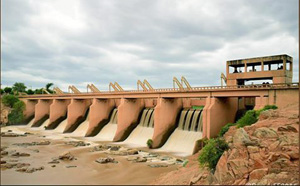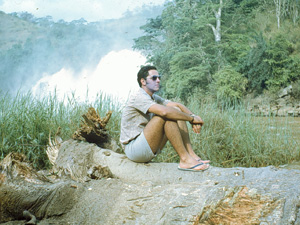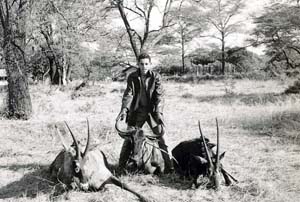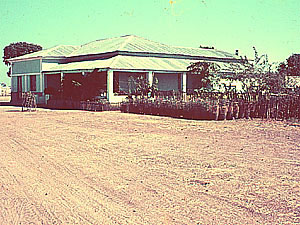

The central plateau of Angola raises some 1700 meters above the sea level and is excellent for agriculture. The climate there is moderate with mild summers. The north is covered with equatorial jungle and the climate is very hot and humid. Temperatures of 40 degrees and 100% humidity are not uncommon. The south of Angola is semi-desert and dominated by the savannas. The very south is the beginning of the Kalahari Desert which we call Namibe Desert.
With such a variety of climatic zones Angola, along with Moçambique, Zimbabwe and South Africa use to be the cellars of Africa.
Economic indicators from 1973 showed Angola as:
• 3rd World producer of coffee
• 1st World producer of fish fertilizer
• Major producer of crude oil
• Diamonds, Iron ore and Copper
• Cotton, Sugar and Hessian
• Precious timbers, Corn and palm oil
• Cattle and agriculture products
It was in this land of milk and honey that I lived the first 30 years of my life.

Biópio Hydro Station - Angola 1973

Binga Waterfalls - Novo Redondo 1970

Rivungo - Angola 1965

Our House- Mavinga 1966
When I was 14 I started spending my holidays with an uncle of mine that owned a cattle station and trading post in the southeast of Angola in a place called Rivungo.
Rivungo is situated on the right bank of the Quando river in the border with Zambia and it is the beginning of the Okavango Swamp.
Okavango Swamp is formed by the rivers Quando and Cubango flowing from the central plateau of Angola and disappearing mysteriously in one of the most fascinating places in Africa, the Okavango Swamp.
Forced by the expenses caused by my admission to the university and two other children at school, my father had to give up his job at Benguela Railways and bought a farm and trading post in the same area as my uncle, in a small village called Mavinga.
Mavinga was then an important village in the southeast of Angola. Along with my father’s farm, there was the government Administrator of the area, a Weather Station, Post Office and the headquarters of the medical team fighting the tsetse fly. Altogether 9 Europeans lived in Mavinga until 1967.
Now Mavinga is the headquarters of the Unita group that represents de Umbundo tribe and fights against the established government.
Since I was 14 until I join the army at 21, I spent all my time in the Okavango. There I experienced the trills of hunting the big game of Africa.
During the dry season, the Okavango is the only place in thousands and thousands of square miles with fresh water. This makes the swamp a paradise for the wildlife.
I collected trophies from all species in Angola with the exception of the Gorilla and Okapi.
If I could go back in time with what I know today about conservation of species I would definitely do things in a different manner, but the perception of the problem in those days was different.